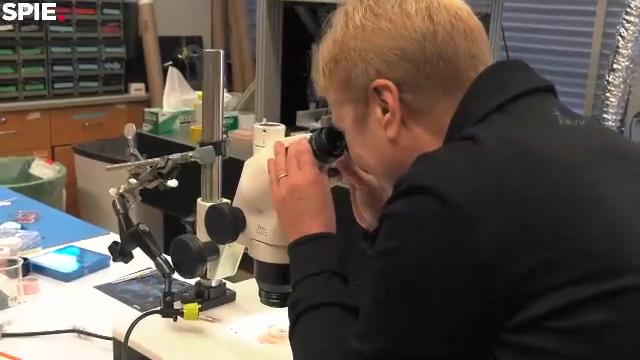Biology and technology are moving closer and experts are wondering if this poses a new security threat.
Constructing gene circuits that satisfy quantitative performance criteria has been a long‐standing challenge in synthetic biology. Here, we show a strategy for optimizing a complex three‐gene circuit, a novel proportional miRNA biosensor, using predictive modeling to initiate a search in the phase space of sensor genetic composition. We generate a library of sensor circuits using diverse genetic building blocks in order to access favorable parameter combinations and uncover specific genetic compositions with greatly improved dynamic range. The combination of high‐throughput screening data and the data obtained from detailed mechanistic interrogation of a small number of sensors was used to validate the model. The validated model facilitated further experimentation, including biosensor reprogramming and biosensor integration into larger networks, enabling in principle arbitrary logic with miRNA inputs using normal form circuits. The study reveals how model‐guided generation of genetic diversity followed by screening and model validation can be successfully applied to optimize performance of complex gene networks without extensive prior knowledge.
Summary: A new study explores how neural activity influences CREB dynamics.
Source: Osaka University.
Neuronal activity mediates the formation of neuronal circuits in the cerebral cortex. These processes are regulated by the transcription factor CREB, which regulates gene expression in neuronal activity-dependent processes. Neuronal activity enhances CREB-mediated transcription but the mechanisms remain unclear. CREB binds to a cAMP response element (CRE) in the promoter region of its target genes. Assembly and disassembly of CREB-CRE interactions control spatiotemporal gene expression in the nucleus. However, how CREB interacts with CRE in activity-dependent mechanisms is not known.
The age of widespread autonomous flight came another step closer as DARPA announced its Aircrew Labor In-Cockpit Automation System (ALIAS) has completed Phase 2 of its development program. The drop-in, removable kit designed to convert conventional aircraft into advanced automated vehicles requiring fewer crew was installed in two different Cessna 208 Caravan fixed-wing aircraft, a Diamond DA-42 fixed-wing aircraft, and a Sikorsky S-76 helicopter.
According to DARPA, the ALIAS-equipped aircraft successfully completed flight demonstrations as well as responding to simulated flight emergencies while on the ground that included systems failures that could cause pilots to deviate from normal procedures. In both cases, the agency says that ALIAS worked without adversely affecting airworthiness.
ALIAS is intended as a way of automating various military aircraft without making bespoke modifications to each individual plane design. The idea is to develop a kit that can be installed in the cabin of an aircraft, where it can take control and fly missions from takeoff to landing as well as handling emergencies based on existing vehicle information, procedures, and flight mechanics.
One of the distinct advantages of working in the IT industry for over 35 years is all of the direct and indirect experience that brings, as well as the hindsight that comes with that.
One of the more personally interesting experiences for me has been watching the growth and ultimate success of the Open Source Software (OSS) movement from a fringe effort (what business would ever run on OSS?) to what has now become a significant component behind the overall success of the Internet. I was initially reminded of the significance of the Open Source Software movement, and how long it’s actually been around when the technology press recognized the 25th anniversary of the Linux kernel. That, and the decision in January of 1998 by Netscape Communications Corp to release the complete source code for the Communicator web browser, are two of the top reasons for the Internet taking off. Well, the first specification for HTTP helped a little as well, I suppose.
There are, of course, many other examples of OSS software that power the Internet, from the numerous Apache Foundation projects, relational and other database management systems like Postgres, MySQL, MongoDB, and Cassandra. The list of markets and technologies for which there are OSS resources is essentially endless.
Research from Linda Griffith’s laboratory group at MIT will be presented at SPIE Photonics West 2017.
The traditional path for most drugs is to start in a petri dish containing a single cell tissue culture, move to small animals such as rodents then on to primates, and finally on to clinical trials in humans. Along the path, every step could encounter results that deem the drug a failure and not suitable for the desired outcome.
In Brief
- Researchers have created a 3D bulk material from silk fibroin that can be programmed to activate specific tasks when exposed to conditions like temperature or infrared light.
- The material could be used to create everything from hormone-emitting orthopedics to surgical pins that change color when they near their mechanical limits.
Engineers from Tufts University have just created a new, versatile material that could be optimized for a number of purposes, particularly within the medical field. The material was constructed out of special proteins called silk fibroins, and it can be programmed for specific biological, chemical, or mechanical tasks. The study was published online in Proceedings of the National Academy of Sciences (PNAS).
The team used water-based fabrication methods inspired by protein self-assembly to produce 3D bulk materials from silk fibroin. Fibroin, the structural protein that gives silk its durability, was chosen because it allowed for the easiest manipulation of the resulting substance’s form, as well as smoother modification of function. It’s also completely biodegradable.
A Harvard research team led by biologist Douglas Melton has retracted a promising research paper following multiple failed attempts to reproduce the original findings.
Luv this.
Tufts University engineers have created a new format of solids made from silk protein that can be preprogrammed with biological, chemical, or optical functions, such as mechanical components that change color with strain, deliver drugs, or respond to light, according to a paper published online this week in Proceedings of the National Academy of Sciences (PNAS).
Using a water-based fabrication method based on protein self-assembly, the researchers generated three-dimensional bulk materials out of silk fibroin, the protein that gives silk its durability. Then they manipulated the bulk materials with water-soluble molecules to create multiple solid forms, from the nano- to the micro-scale, that have embedded, pre-designed functions.
For example, the researchers created a surgical pin that changes color as it nears its mechanical limits and is about to fail, functional screws that can be heated on demand in response to infrared light, and a biocompatible component that enables the sustained release of bioactive agents, such as enzymes.









